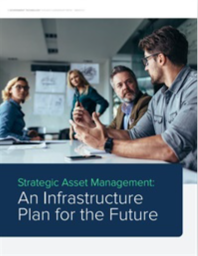Strategic Asset Management: An Infrastructure Plan for the Future
The United States faces a staggering infrastructure backlog of nearly $2.6 trillion enough to cost the average American household $3,300 a year. If unaddressed, this backlog is predicted to increase by a half-trillion dollars over the next decade, a challenge faced by governments of all sizes.'Even the smallest city has a million assets in bridges, pavements, facilities, sidewalks and more competing with each other for the scarce dollar,' says Ashay Prabhu, founder of Assetic (now Brightly). 'These governments need to decide how to spend these funds wisely.'
Unprecedented federal funding from the 2021 Infrastructure Investment and Jobs Act (IIJA) provides state and local governments a generational opportunity to address these longstanding infrastructure deficits and begin making good on overdue smart city aspirations. However, doing so will require governments to approach capital planning in new ways to make the most of their investments.
'The time is now for government to rethink capital planning to optimize these short-term stimulus funds and resources to reduce ‘infrastructure creep,' bring budgets back into balance and allow these benefits to last for decades,' says Prabhu.
This paper outlines government infrastructure challenges and identifies how strategic asset management can help leaders chart a sustainable course for their communities.
Read More
By submitting this form you agree to Brightly contacting you with marketing-related emails or by telephone. You may unsubscribe at any time. Brightly web sites and communications are subject to their Privacy Notice.
By requesting this resource you agree to our terms of use. All data is protected by our Privacy Notice. If you have any further questions please email dataprotection@techpublishhub.com


More resources from Brightly

Automating Safety
As the overly-used phrase so correctly states: 'safety is no accident'. Dedication to safety-first culture will have fewer accidents. Reduction in ...

Strategic Asset Management: An Infrastructure...
The United States faces a staggering infrastructure backlog of nearly $2.6 trillion enough to cost the average American household $3,300 a year. If...

3 technologies you need to future-proof your ...
New technology can be a scary thing. New processes to learn, new systems to teach your team and new ways to do things. Change isn't easy, but the k...

